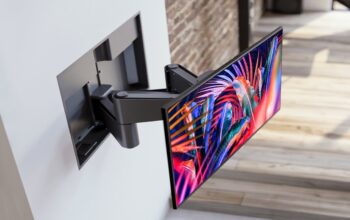Are you thinking about buying a second-hand diamond ring? This complete guide explains what you need to know before making that special purchase. From checking authenticity to knowing where to shop safely, we break down the essentials in simple language. Learn how to spot quality, ask the right questions, and save money without compromising on beauty or meaning. Make a smart, informed choice with your second-hand diamond ring purchase.
Buying a diamond ring is a special moment. Whether it’s for a proposal, an anniversary, or a personal milestone, it carries deep meaning. But today, more people are choosing to buy second hand diamond rings instead of brand-new ones.
This choice isn’t just about saving money. It’s also about value, sustainability, and finding unique designs you can’t always get in retail stores. Still, before you make that decision, there are a few important things to know.
Let’s walk through what to look for, how to protect yourself, and where to find the perfect ring.
Why Choose a Second Hand Diamond Ring
Second hand doesn’t mean second best. In fact, many pre-owned rings are in excellent condition. You often get better quality at a lower price. Older rings may also come with unique settings and craftsmanship no longer seen in modern designs.
There’s also the eco-friendly factor. Buying second hand diamond rings reduces the demand for new mining, which helps protect the environment. This makes it a smart choice for both your budget and the planet.
Some people also enjoy the story behind a vintage or antique ring. It adds character and charm that new rings can’t always offer.
Understanding Diamond Quality Basics
Before buying any diamond ring, you should understand the basics. Jewellers often use the 4Cs—cut, colour, clarity, and carat weight—to measure quality. These factors affect both the appearance and value of a diamond.
A well-cut diamond reflects light beautifully. Colour ranges from clear to slightly yellow, while clarity shows how many small flaws are present. Carat weight simply refers to size.
In the second hand market, these details still matter. Make sure the diamond’s quality matches the price you’re paying. If the seller provides a certificate, read it carefully. If not, ask for one or consider having the diamond evaluated by an independent expert.
Check for Certification and Authenticity
This is one of the most important steps when buying second-hand jewellery. Always ask if the diamond has been certified by a reputable grading lab like GIA or IGI. This document confirms the diamond’s details and proves it’s real.
If the ring doesn’t have a certificate, it doesn’t mean it’s not authentic—but you should be more cautious. In this case, a trusted local jeweller or gemologist can inspect the ring before you buy.
You should also confirm whether the ring is made from real gold or platinum. A hallmark stamped inside the band can tell you what type of metal it is.
Where to Buy Safely and Smartly
There are many places where you can find second hand rings. Some people buy from high-street jewellers, others from specialist vintage stores. Online platforms and auction houses are also popular options.
When buying online, make sure the seller has good reviews and clear return policies. Trusted platforms will provide detailed product descriptions, high-quality images, and certificates. Be cautious if the deal seems too good to be true.
If you prefer a more personal touch, visiting a jeweller in person allows you to inspect the ring closely. You can see how it fits, view the sparkle, and ask all your questions on the spot.
Ask the Right Questions Before You Buy
Never rush into buying a ring, especially when it’s second hand. Asking questions can help you avoid disappointment and ensure you get what you’re paying for.
Ask about the ring’s history. Was it resized? Has it been repaired or restored? Is it an estate piece or a modern resale?
Inquire about the warranty, return policy, and any after-sales services offered. Some sellers may even offer free resizing, polishing, or cleaning.
All of these details matter, especially if you’re gifting the ring or planning to wear it regularly.
Get It Appraised If You’re Unsure
Even if the ring has a certificate, you may want a second opinion. Independent appraisals confirm value, quality, and authenticity. It also helps if you plan to insure the ring later.
A good appraiser will check every detail—stone, setting, and metal—so you know exactly what you’re getting. They can also point out any repairs or issues the seller might have missed.
This step gives you peace of mind and can help you negotiate the price more confidently.
The Emotional Value Still Counts
Some buyers worry that a second hand ring might feel less unique. But love isn’t about how new the ring is—it’s about what it means.
With the right care and choice, a pre-owned ring can feel just as meaningful as a brand-new one. The history behind it may even deepen the sentiment.
Whether you’re buying it for yourself or someone you love, the story you create from the moment you own it is what truly matters.
Final Thoughts
Buying a second-hand diamond ring can be a smart, stylish, and meaningful choice. You’ll save money, reduce environmental impact, and have access to timeless designs. But like any big purchase, it requires careful attention.
Understand the basics, ask questions, and shop from reputable sources. Whether it’s a vintage piece or a gently worn modern style, a second-hand ring can shine just as brightly as a new one—maybe even brighter.
Choose wisely, and you’ll have a treasure that lasts for years to come.



